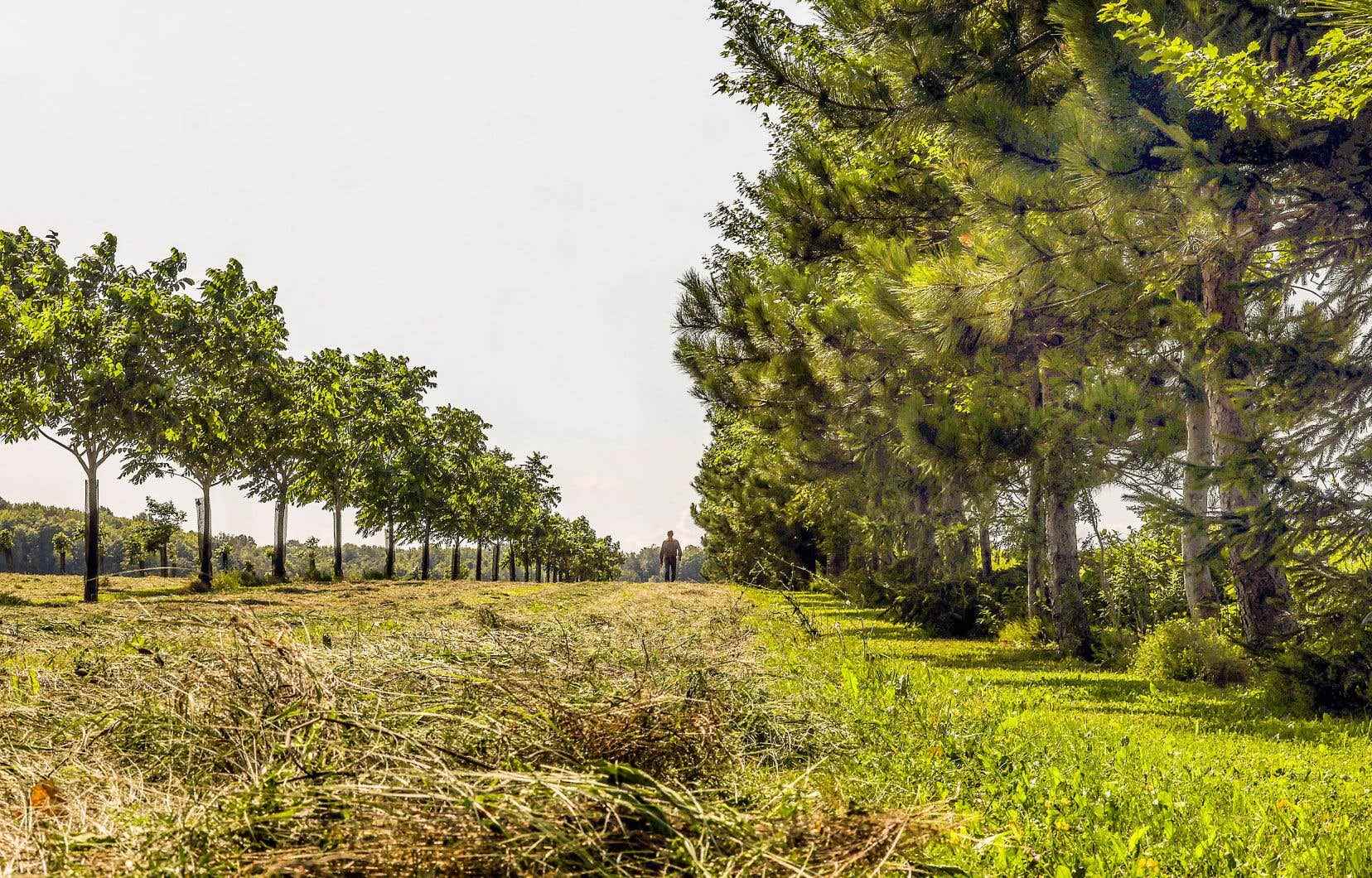The gaze carries far to Calixa-Lavallée. Field crops reign supreme in this small village in the St. Lawrence Lowlands, not far from Verchères. But in the middle of this ocean of corn rises a forest island. We are with Gérard Palardy and Ghyslaine Ménard, two farmers who dare to rub shoulders with trees.
Behind their house, dozens of walnut trees grow quietly. They planted them there in 2016. “They’re starting to produce a little, but it takes about ten years for them to reach their full potential,” says Mr. Palardy, pulling a branch adorned with a few green fruits, the size of limes and hard as rocks.
The couple, who founded their farm in 1983, incorporate the principles of agroforestry into their practice. This learned term does not designate anything very complicated: it is a question of marrying, on the same plot of land, agriculture and forestry. Benefits flow from this in terms of agricultural productivity, soil health, protection of waterways and the economic vitality of the surrounding area.
Agroforestry is still “quite marginal” in regions of the world where agriculture is highly industrialized, agrees Alain Olivier, a specialist in this mode of agricultural production at Laval University. “In the Quebec landscape, when you travel — if only between Quebec and Montreal on Highway 20 — you see that the trees are not very present in the fields,” he points out.
That said, a “very clear interest” in agroforestry has been awakening in recent years, here as elsewhere in the world, according to the professor. Producers get started because they understand that industrial practices flout nature. Nearly 800 people took part in mid-July on the 5e World Agroforestry Congress, which took place in Quebec under the leadership of Mr. Olivier and his colleagues.
Break the wind
On the sidelines of the current craze, Mr. Palardy and Mr.me Ménard has long enjoyed seeing trees grow on their land. In 2006, they had already housed many plants behind their residence, where hay had previously grown. The project, carried out with the Nature-Action organization, aimed to create an ecological corridor from Mont Saint-Bruno to the rare neighboring wooded areas, so that wild animals could move freely.
Sixteen years later, the ecological corridor is still only a fragmented forest archipelago. “It does not close the circuit,” agrees Mr. Palardy, pointing to the fields as far as the eye can see that surround his property. Deer nevertheless come around from time to time. In Calixa-Lavallée, as elsewhere in Quebec, trees are still seen as enemies by many farmers.
And yet, the latter can make allies of them. On the west side of one of their agricultural plots, the Palardy-Ménards planted a windbreak hedge in 2007. Pines, maples and fruit trees (to feed the birds) stifle the gusts, which prevents soil erosion. “It keeps the snow in too, it’s good for winter wheat,” adds Palardy.
The problem of farmland erosion is acute in the province. The precious “black soils” of the Montérégie, where half of Quebec’s vegetables grow, lose 2 cm in thickness per year due to wind and decomposition. If nothing changes, they could completely disappear within 50 years.
Even though the Quebec government has been subsidizing the creation of windbreak hedges for years, they are still rare. Farm machinery operators often see it as a cumbersome obstacle at the edge of fields, explains Mr. Palardy. “It affects their machinery mirrors or their headlights; they don’t like it,” he laments.
Very hard shells
The two environmentally conscious growers farm 30 hectares, where they grow wheat, barley and soybeans. This year, it’s soybeans. Since their field runs along a watercourse, a riparian strip must separate them. Manitoba maple, ash and larch thrive near the creek. Letting trees grow in this strip solidifies the banks and limits erosion.
The “agroforestry” jewel of their farm, however, is certainly the black walnut trees, the hybrid walnut trees, the heart walnut trees and the hazelnut trees, which will eventually produce tons of nuts per year. “I don’t think I had realized the magnitude of this project”, admits laughing Mme Ménard, who is approaching 70 years old. Indeed, preparing the nuts for consumption requires a lot of work.
In the garage of the two growers, next to an electric lawn tractor, there is a machine of their manufacture which removes the soft skin of the nuts. After washing with water, the fruits dry for five months on a shelf in their basement. “It’s like a good wine, it has to mature slowly,” explains the farmer.
Then, before eating them, you have to break them. For their personal consumption, the couple has a huge nutcracker. Leaning on her kitchen table, Ghyslaine Ménard pulls firmly on the handle, then a sound cracking sounds. “Nuts like these can be marketed, but it’s so difficult to open! she exclaims.
When production kicks into high gear, the couple will just have to find a professional machine that can crack those tough nuts, or else sell their harvest to someone who has such a device. However, the edible nut industry is very young in Quebec. To find his equipment, a producer from Saint-Ambroise-de-Kildare had to go to Europe, notes Mme Menard.
Often, agroforestry products are unusual — like walnuts in Quebec — and this involves “major constraints” for farmers, admits Professor Olivier. However, these challenges also come with exciting prospects. The warming of the climate will allow, for example, the planting of fruit trees which, until now, were tearing them down in Quebec.
For M. Palardy and Mme Ménard, embarking on agroforestry means above all thinking about the future. The walnut trees behind their house will one day become huge trees that will host a host of birds, insects and mammals. Mme Ménard thinks many farmers will soon be adopting greener practices. “I think that’s going to change with the next generation,” she says.
